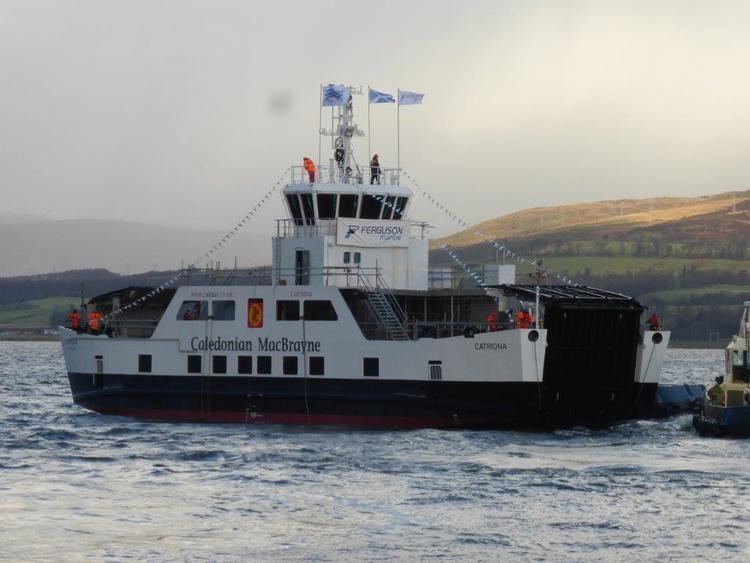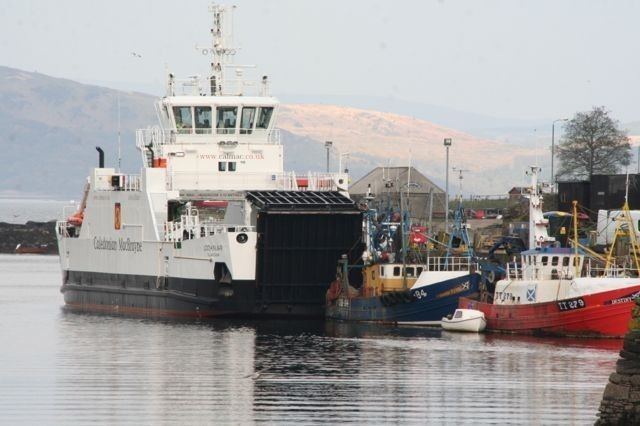Launched 11 December 2015 Draft 1.73 m | Length 44 m Builder Ferguson Shipbuilders | |
 | ||
Route | ||
Launch of mv catriona ferry
MV Catriona is a pioneering diesel electric hybrid passenger and vehicle roll-on, roll-off ferry built for Caledonian MacBrayne for the Claonaig - Lochranza crossing. She is the third hybrid ferry commissioned and owned by Caledonian Maritime Assets, one of three such ferries in the world to incorporate a low-carbon hybrid system of diesel electric and lithium ion battery power. The ferries are sea-going and are nearly 150 ft long, accommodating 150 passengers, 23 cars or two HGVs.
Contents

History

MV Catriona was launched on 11 December 2015 at Ferguson Marine Engineering Ltd in Port Glasgow by Mrs. Anna Østergaard, wife of CMAL Chairman, Erik Østergaard. Catriona is the first ship to be built at the Ferguson yard following their purchase by Clyde Blowers Capital.

The ships in the hybrid fleet are named after Scottish literature. The first, MV Hallaig, entered service on the Sconser to Raasay route in October 2013. The second, MV Lochinvar entered service on the Tarbert to Portavadie route in 2014. Catriona is a novel written by Robert Louis Stevenson in 1893.
Catriona was awarded ‘Electric & Hybrid Propulsion System of the Year’ in 2016.
Layout

MV Catriona can accommodate 150 passengers, 23 cars or 2 HGVs. She has a service speed of nine knots and is powered by small diesel generator sets, feeding power to a 400 volt switchboard, which supplies power to electric propulsion motors that turn the propulsion units. In addition, 2 lithium-ion battery banks with a total of 700kWh are also available to supply power to the units. The battery banks will be charged overnight from the mains. It is anticipated that renewable energy sources will be used to charge the batteries in future, further reducing the carbon footprint.
Experience has shown that hybrid vessels can reduce fuel consumption by up to 38% compared to a conventionally powered vessel of the same size. This will result in a decrease in CO2 emissions in excess of 5,500 tonnes per vessel over their lifetime, with a similar decrease in sulphur and nitrogen oxide emissions.
Service
CalMac's hybrid ferries are designed to operate on many of the short crossing routes around the Clyde and Hebrides. CalMac announced that Catriona will be introduced on the Claonaig - Lochranza crossing to meet increasing demand on this route and Catriona displaced MV Loch Tarbert in September 2016.
